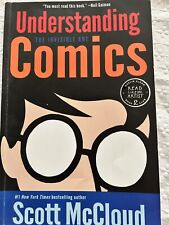
Measurements taken using Jefferson Lab’s CEBAF Large Acceptance Spectrometer (CLAS) are telling us more about how matter is produced from “nothing,” that is, the vacuum. Using the CLAS in Hall B, Daniel S. Carman of Ohio University and nearly 150 members of the CLAS Collaboration studied the spin transfer from a polarized electron beam to a produced Lambda particle. Their results were recently published in Physical Review Letters.
The CLAS experimenters collided JLab’s polarized electron beam into a proton target, producing a polarized Lambda (?0) and a kaon (K ). Physicists have long known that matter and anti-matter can be created when energetic particles strike one another. The new particles are not really created from “nothing.” They are created from the available kinetic energy of the colliding particles. Visualize a bowling ball hitting its rack of 10 pins so hard that the 10 pins turn into 11 normal pins and one “anti-pin.” Energy is conserved and so is matter; that’s why a new anti-matter particle is created each time a matter particle is created.
These anti-aligned spins could throw theorists into a spin. According to the popular triplet-P-zero (3P0) model, a quark-antiquark pair is produced with vacuum quantum numbers, and that means their spins should be aligned. These results imply that the 3P0 model may not be as widely applicable as was thought.
Winston Roberts, a theorist at Jefferson Lab and associate professor of physics at Old Dominion University, finds the CLAS measurement very interesting. “If they are right, it means we have to rethink what we thought we understood about our models for baryon decays,” he says. “The CLAS results may also be saying something about what we understand of baryons themselves — our knowledge of how to describe scattering processes such as the one they measure, or even that there may be oddities, peculiarities, dare I say ‘strangeness,’ in the way strange quark-antiquark pairs are produced.”
The experimenters expect further reaction from theorists. “Polarized Lambda production is obviously sensitive to the spin-dynamics of quark-pair creation,” says Mac Mestayer, a JLab staff scientist, and one of the lead authors on the paper. “We eagerly await confirmation, or refutation, of the conclusions of our simple model by realistic theoretical calculations.”
Meanwhile, Carman adds, the researchers are planning further experiments. “Our group is continuing this exciting research by extending our arguments to test our picture of the dynamics in different reactions.”
These results show that we have much still to learn about the basic structure of the vacuum. One hundred years ago the vacuum was thought to consist of an “ether” through which light propagated as waves. Albert Michelson, Edward Morley, Albert Einstein and others disproved this hypothesis and the vacuum became an empty void. Twentieth century quantum field theories have now filled this once-empty space with virtual particles. It’s now obvious that a vacuum is not the cold, empty place it was once thought to be. JLab physicists and researchers are studying the spin of the produced quarks in hopes of understanding the vacuum better, as well as the matter that populates it.

















![ONKELOS ON THE TORAH: Understanding the Bible Text -- Vayikra [Leviticus] NEW picture](/store/img/g/fQIAAOSwSf1jTZo~/s-l225/ONKELOS-ON-THE-TORAH-Understanding-the-Bible-Text-.jpg)
Comments are closed.